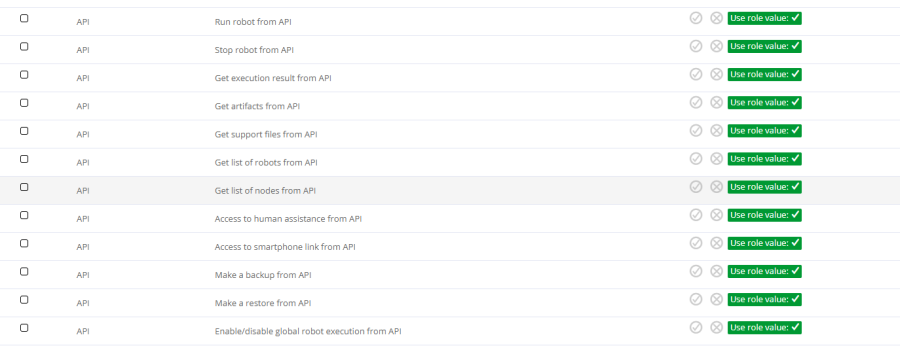| The capabilities described on this page are included in Appian's standard capability tier. Usage limits may apply. |
Appian RPA includes an exposed REST API, which makes it easier to invoke the available functionality from other systems. This section includes descriptions of each endpoint, its request body, and response details.
To call the API, use the following format for each endpoint: https://<site>.appiancloud.com/rpa/rest/oo/<method-path>.
Where:
<site> is the domain and the context of the Appian RPA console, for example "lab.appian.io".<method-path> is the API method to be invoked. Some methods may require parameters.Use an API key to authenticate with the Appian RPA REST API. The service account should use the System Administrator user type in Appian, so it has administrator rights in Appian RPA. To obtain the most information and functionality from the REST API, use the API key associated with the service account that you use to authenticate Appian with Appian RPA.
When making REST call to Appian RPA, the API Key must be sent as a Bearer Token:
curl https://example.appian.com/rpa/rest/oo/<method-path> -H "Authorization: Bearer ${API_KEY}"
Every method topic in this section lists the request body, including any required parameters.
A Content-Type header with value application/json is required.
For requests without any listed parameters, the body must be set to an empty JSON ({}) instead.
Responses are in JSON format and will always include the following attributes:
The possible results of the call are:
OK: The call has been successfully completed.KO: The call has not been successfully completed.EXCEPTION: The call caused a server failure. It is unusual to obtain this kind of result in the API calls. In case it occurs, contact your Appian RPA administrator.Result values vary based on the request made. Each method includes details about what results are contained in the response body.
Appian RPA Rest API Overview